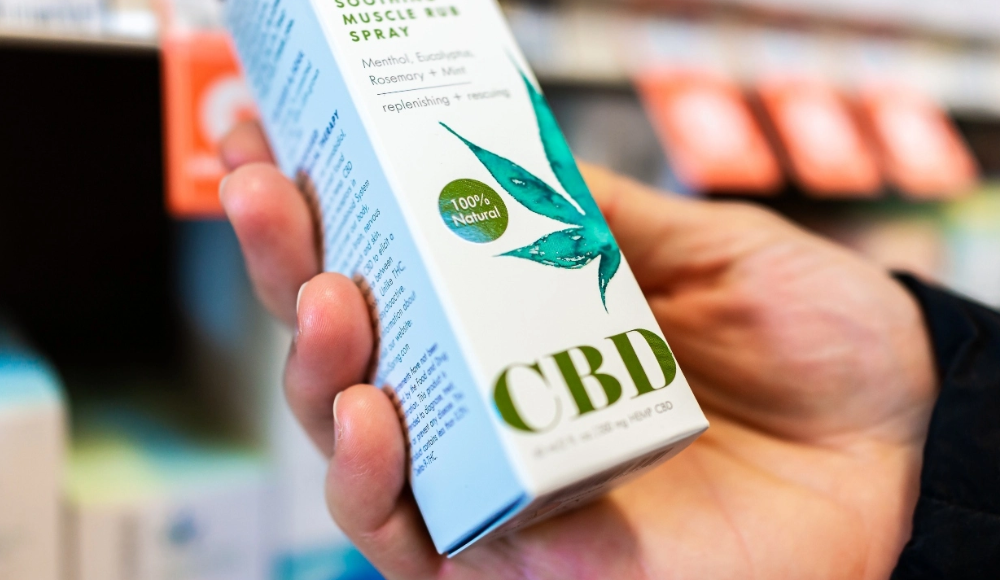Business
CBD prices are stabilizing after years of decline – but is it progress?

A yearslong tailspin for CBD prices is showing signs of leveling off.
But it’s too soon to say whether the CBD market is rebounding or if companies making CBD products have simply cut so deeply that they’re now holding or increasing prices just to survive.
The pricing trend was noted recently by the Brightfield Group, a Chicago-based cannabis analytics firm that crunches prices on thousands of websites and brick-and-mortar stores selling CBD.
“There were some massive price cuts that took place during the (COVID-19) pandemic, and those look to be ending,” said Brightfield’s managing director, Bethany Gomez.
Gomez compared the CBD market landscape to that of apparel, where discounting is so prevalent that consumers resist paying what they perceive to be full price.
A similar story has played out in the marijuana market: U.S. and Canadian cannabis retailers have been discounting their products, likely reflecting the rapidly growing number of adult-use brands and products available to retailers.
In the CBD market, Gomez said, widespread discounting through 2020 “really trained consumers to hunt for discounts.”
Brightfield noted 40%-50% price declines for CBD products in 2019 and 2020.
Through the second quarter of 2022, though, Brightfield noted that prices are holding somewhat steady, according to a pricing review of 100 brands and 100 brick-and-mortar retailers, plus digital menu audits.
CBD price stabilization comes as wholesale CBD inputs remain cheap, but inflation pressures are driving up other costs for CBD makers.
Not a good sign?
Not all manufacturers are ready to say that CBD pricing won’t keep falling, however.
“I think price is going to continue to get compressed,” said Bharat Ayyar, general manager of Vermont-based Sunsoil, which grows hemp and makes CBD.
Ayyar tracks CBD pricing on his own and believes the stabilizing prices might be a sign that surviving CBD makers have already cut prices as far as they can.
He noted that many publicly traded CBD companies have yet to show profits.
“These are companies that are not profitable, that are burning millions of dollars every quarter,” Ayyar said.
“And if they reduce their prices, they’re just going to get deeper into the red.”
Ayyar agreed with another conclusion Brightfield made from its pricing surveys: The CBD market won’t expand as many hoped without action by the U.S. Food and Drug Administration to regulate over-the-counter consumable CBD products.
Tinctures, ecommerce declining
Other CBD market trends Brightfield noted:
- More CBD makers are adding other cannabinoids and functional ingredients to their products in order to position themselves for distinct needs, such as weight loss or menstrual support.
- Tinctures remain the largest product segment in the CBD market by sales, at 19.2%. But gummies, drinks and other edibles are likely to gain market share. As Gomez put it, consumers are attracted to any CBD format that is “less of an objectively weird product” than a sublingual tincture. “Even those who are heavier users are shifting to that gummy format.”
- Market share for the top 20 CBD companies shrank slightly during the first quarter of 2022, from 18.9% to 18.5%. Brightfield attributes the slight change to supply-chain issues and slowing consolidation.
- E-commerce will remain the top sales channel for CBD in 2022, at 39.2%. Pharmacies comes next at 19.5% of sales, followed by CBD specialty retailers with 10.7% of sales. Gomez doesn’t see specialty CBD retail going away. “People are starting to go back into the world again, and some really do prefer to talk to someone about the products.”
Source: https://mjbizdaily.com/cbd-prices-are-stabilizing-after-years-of-decline-but-is-it-progress/